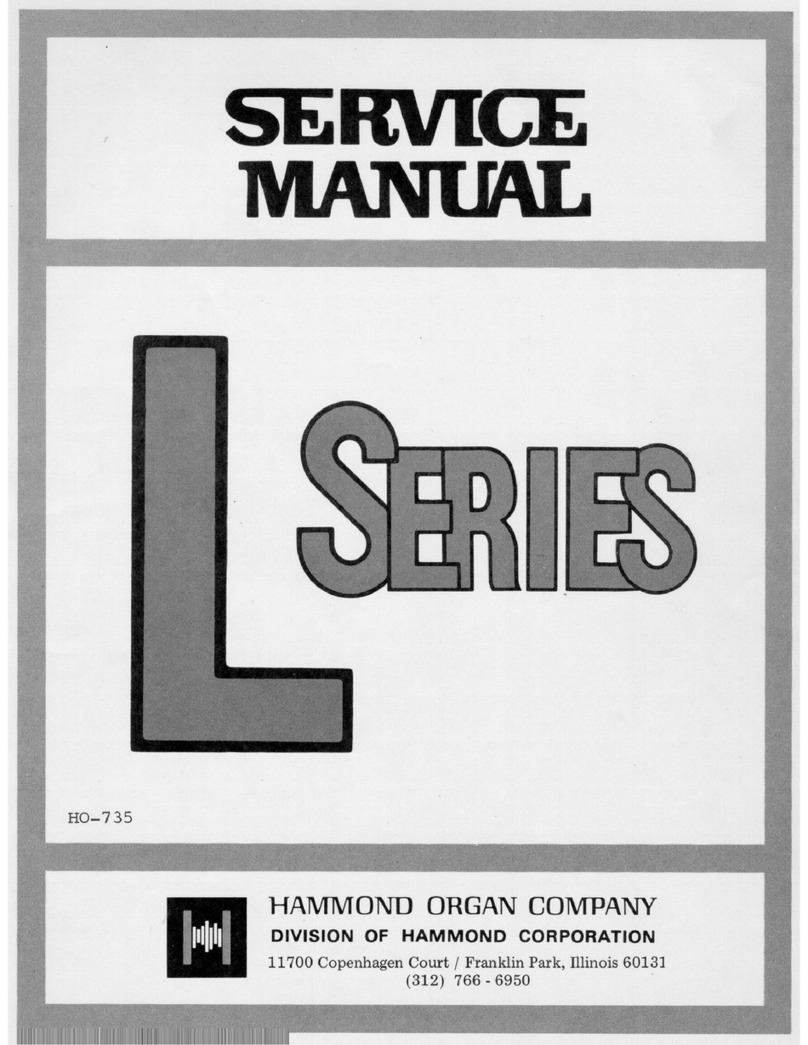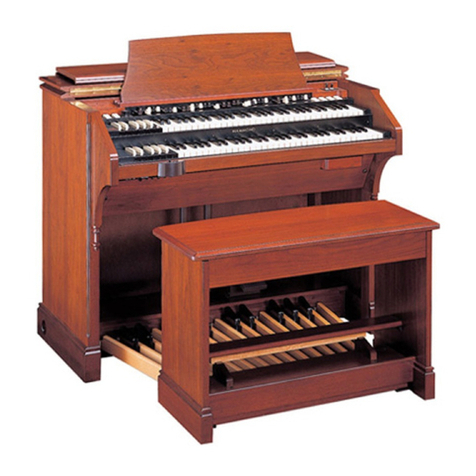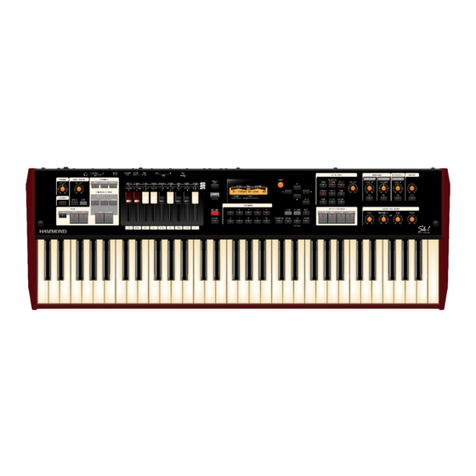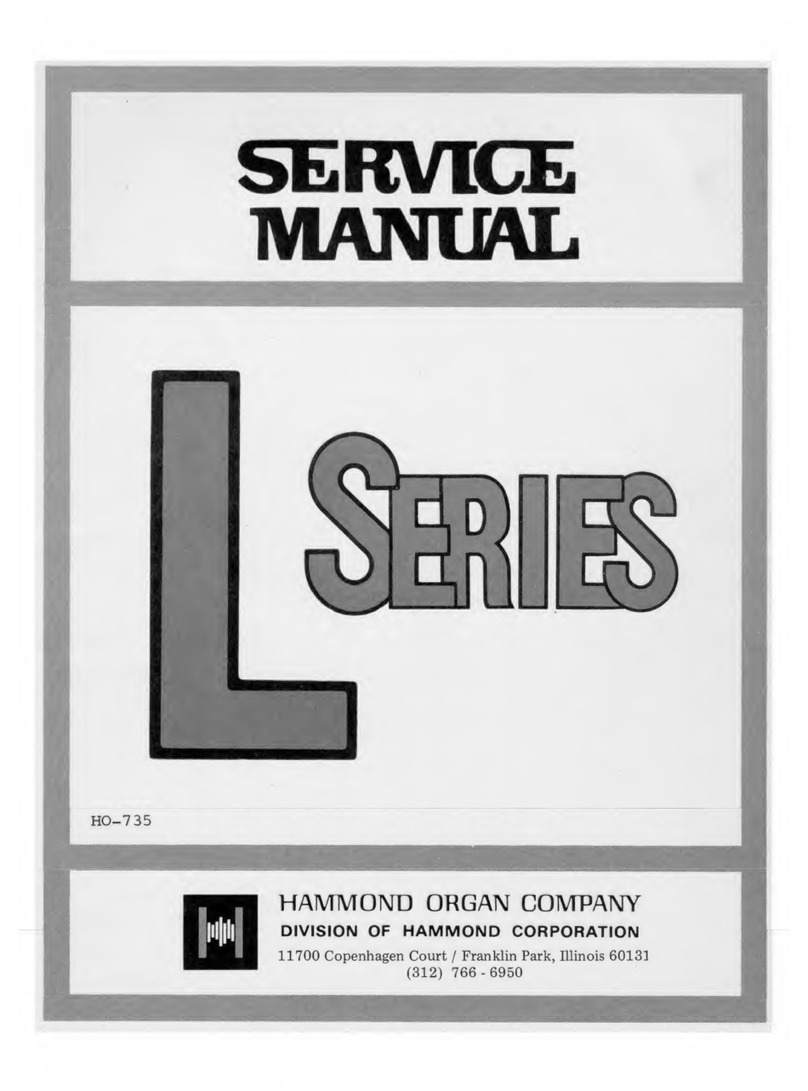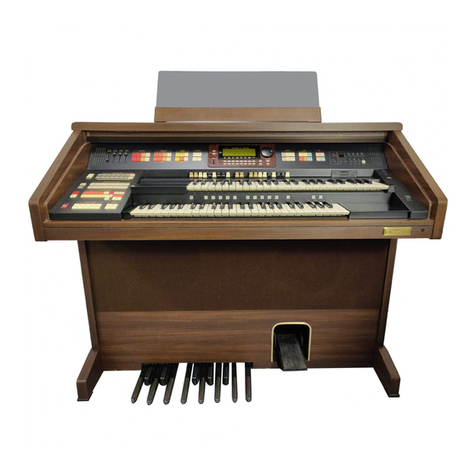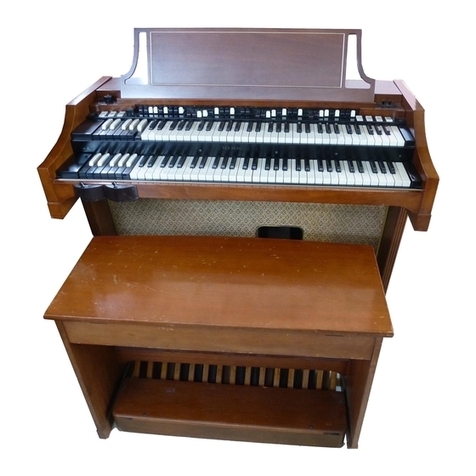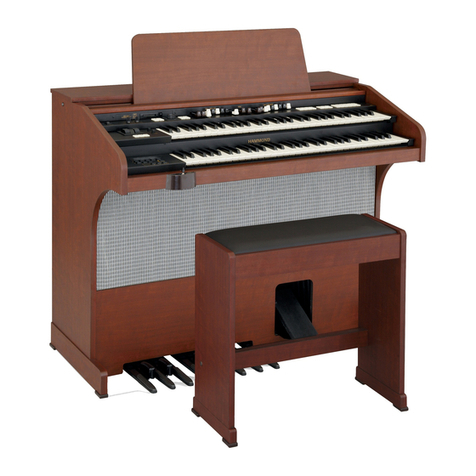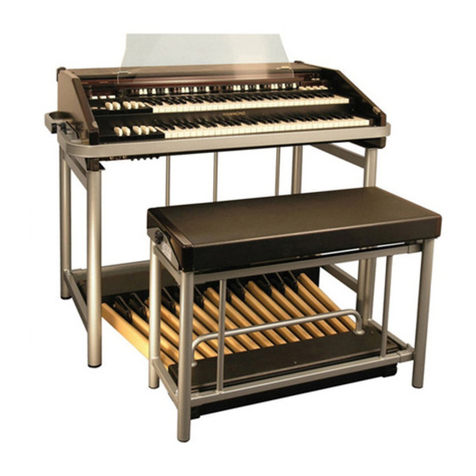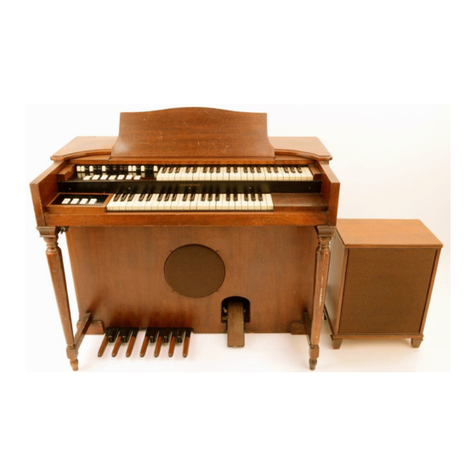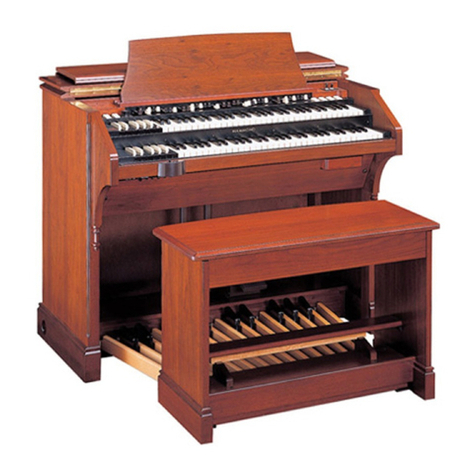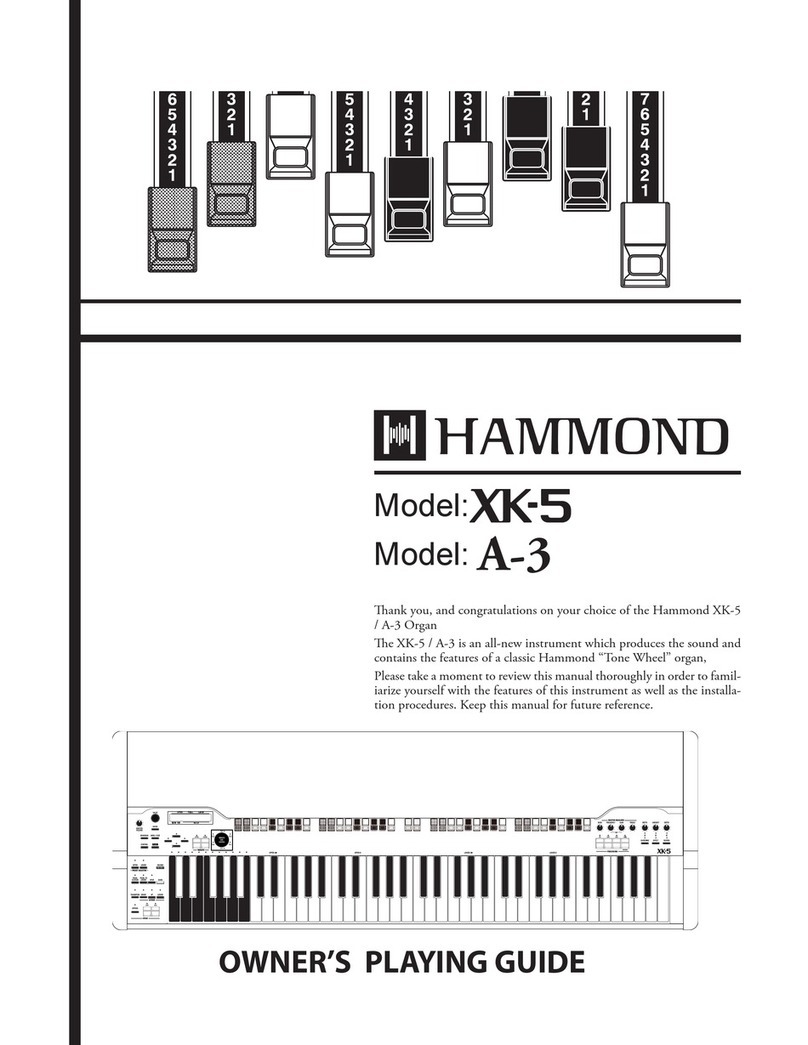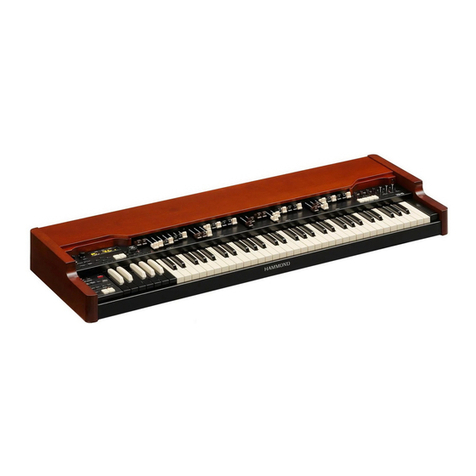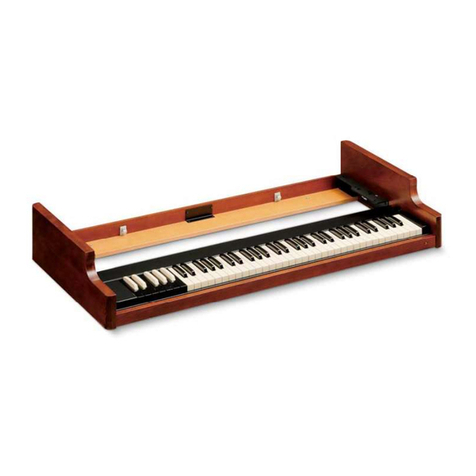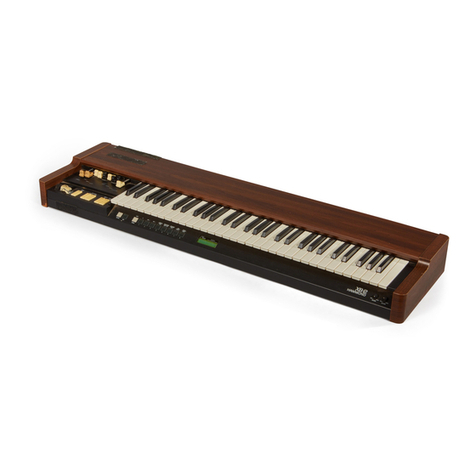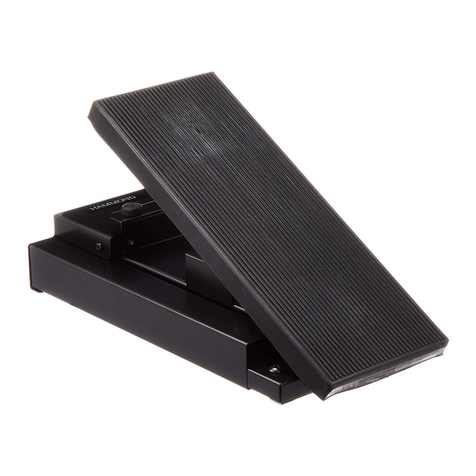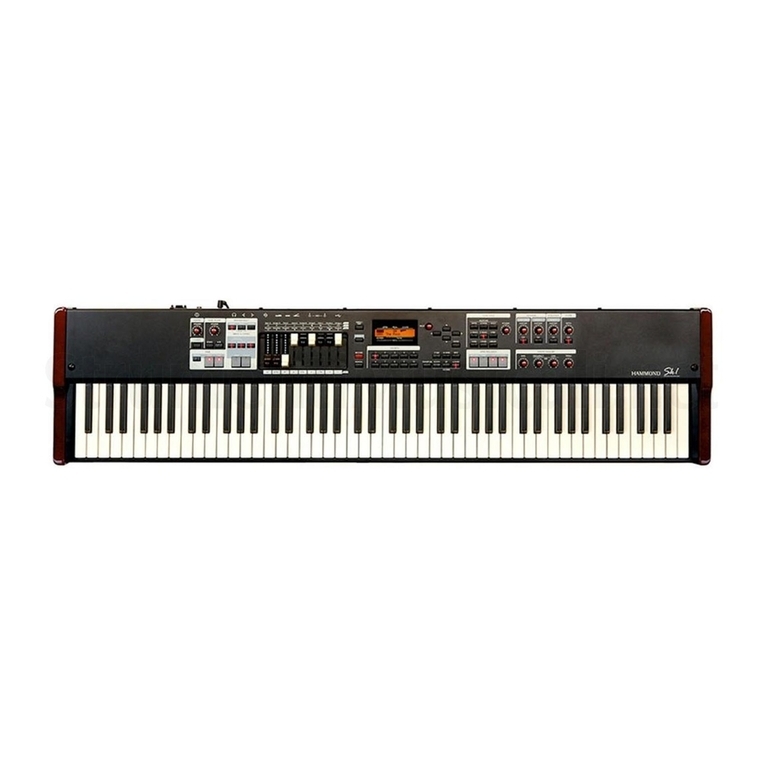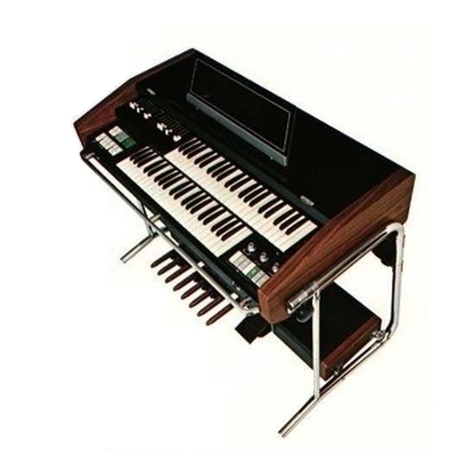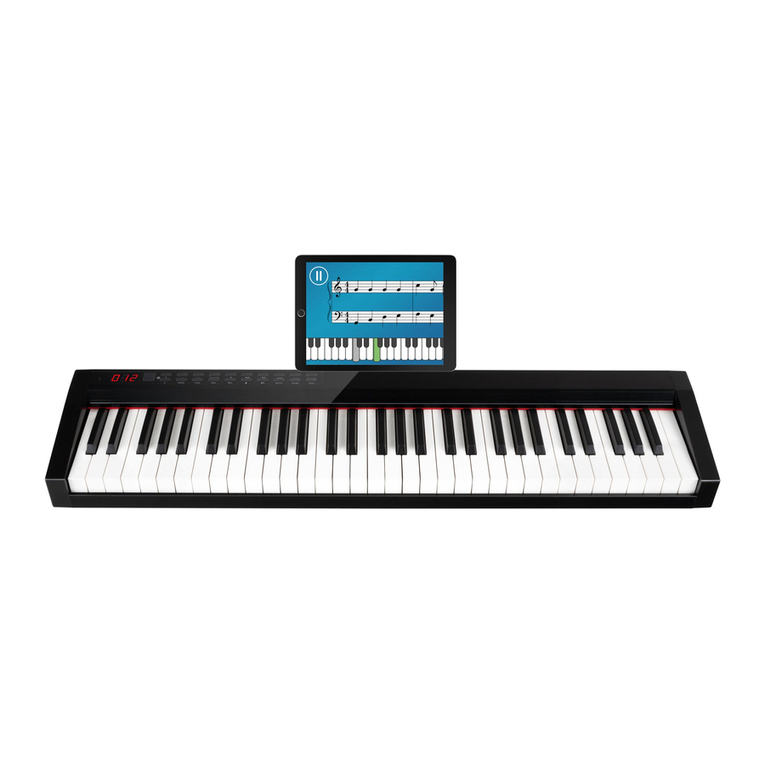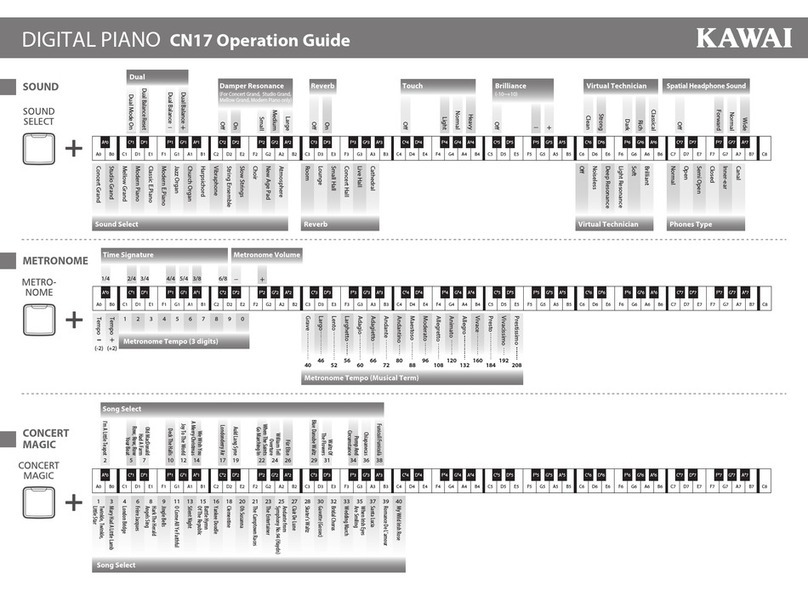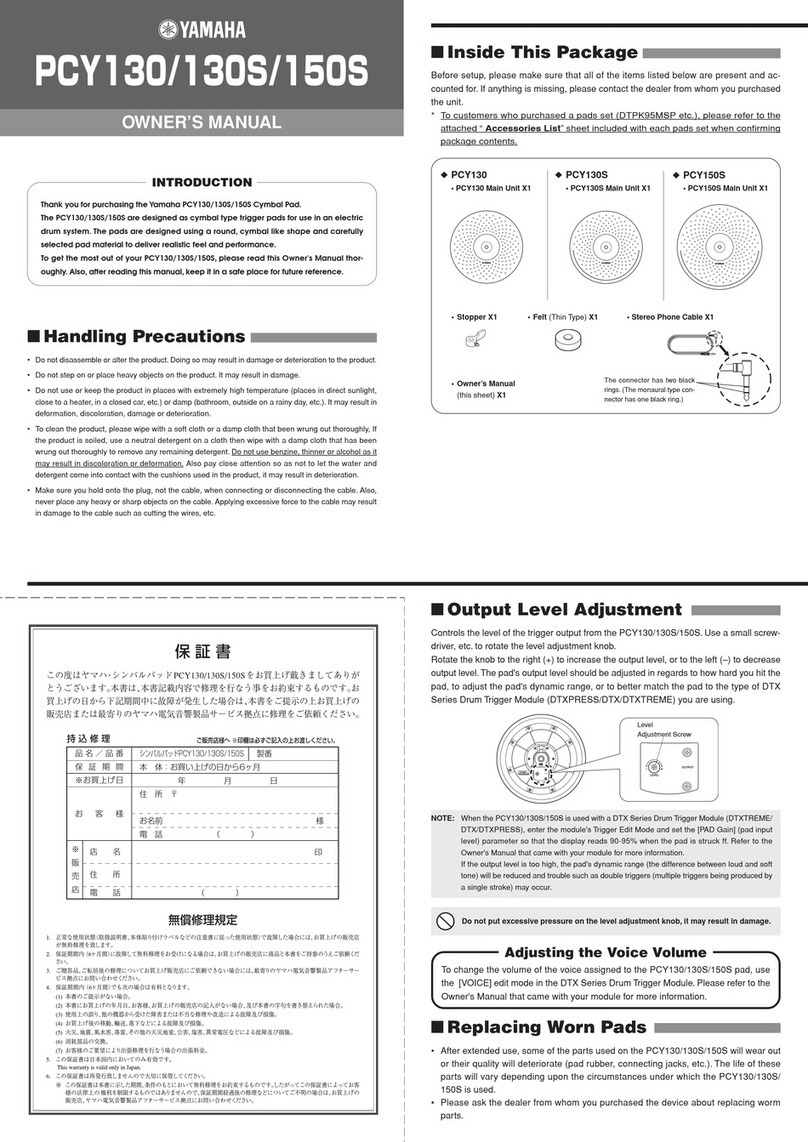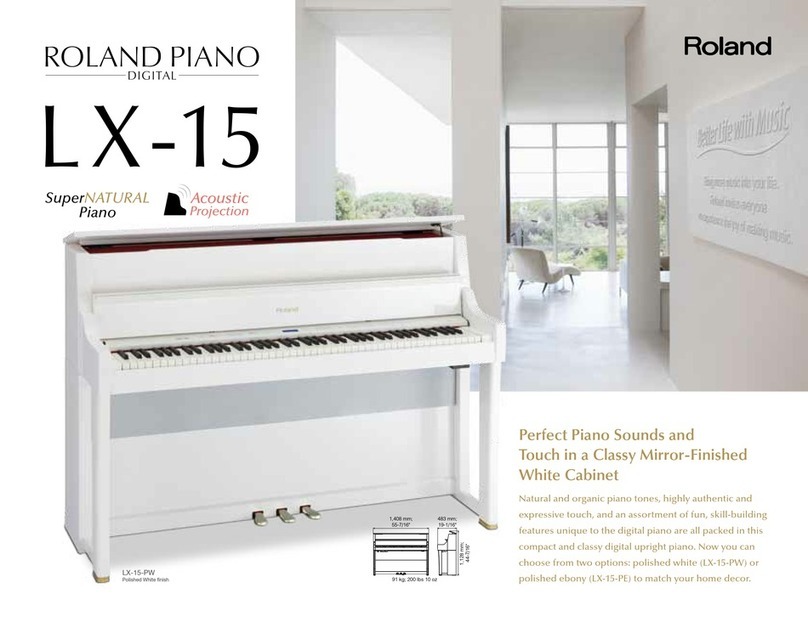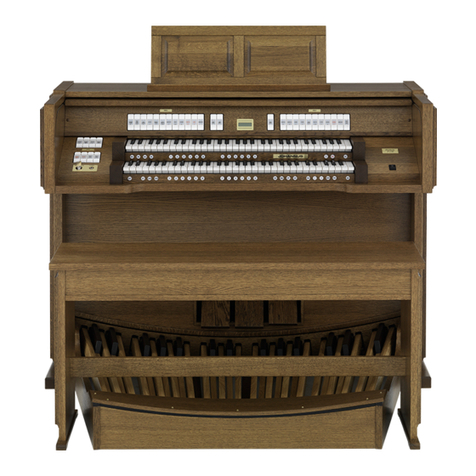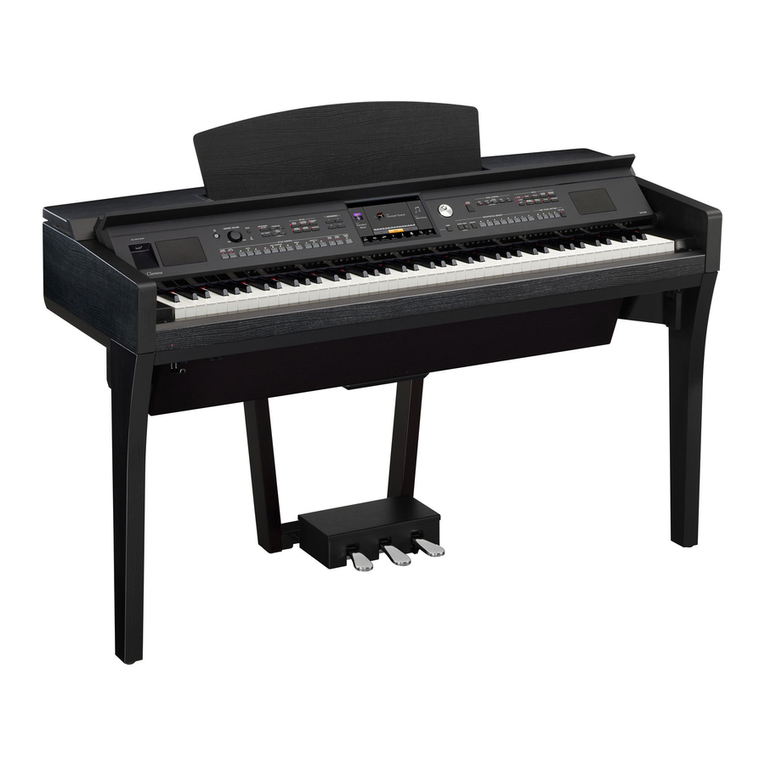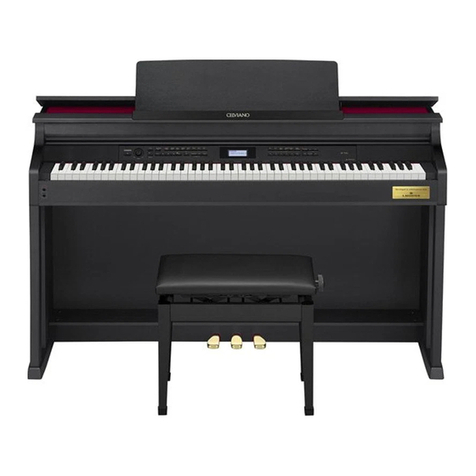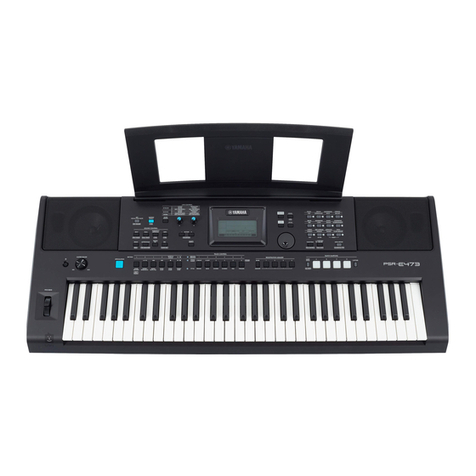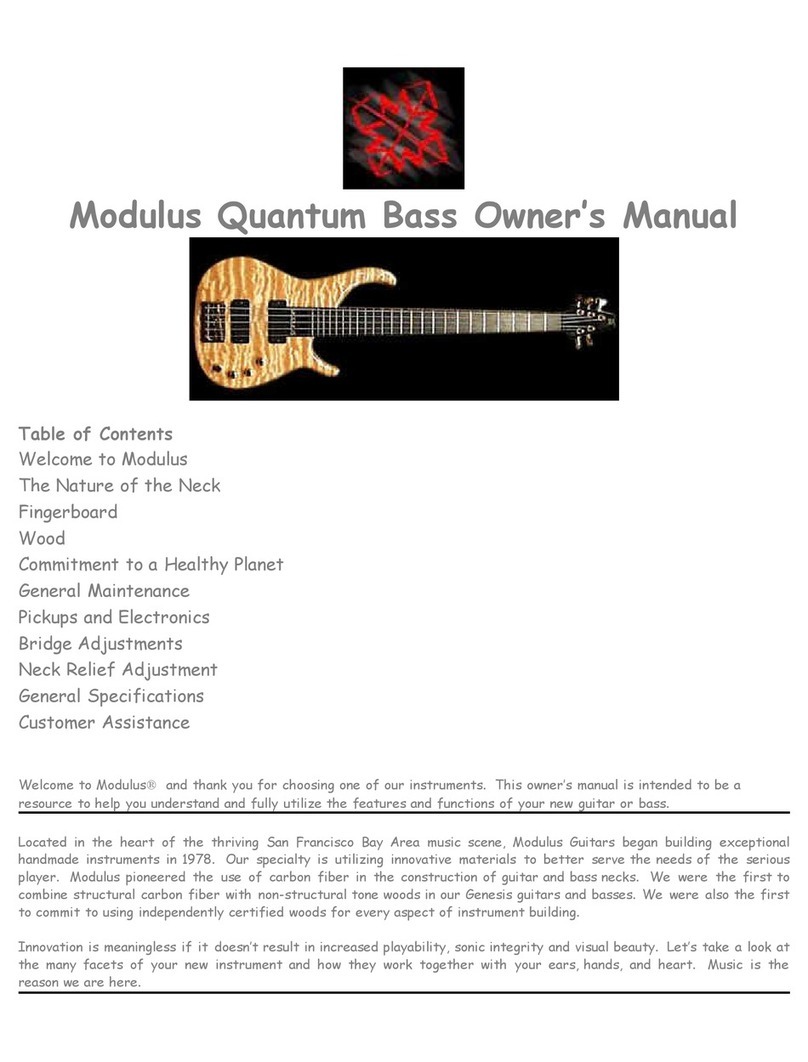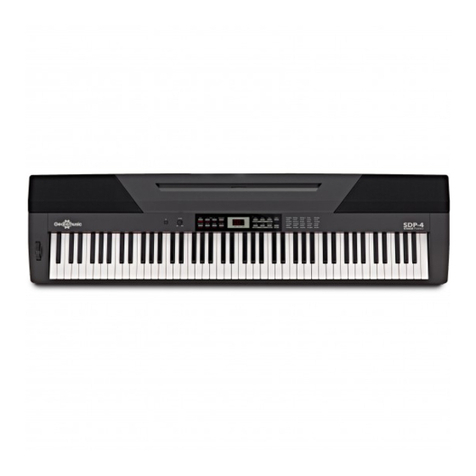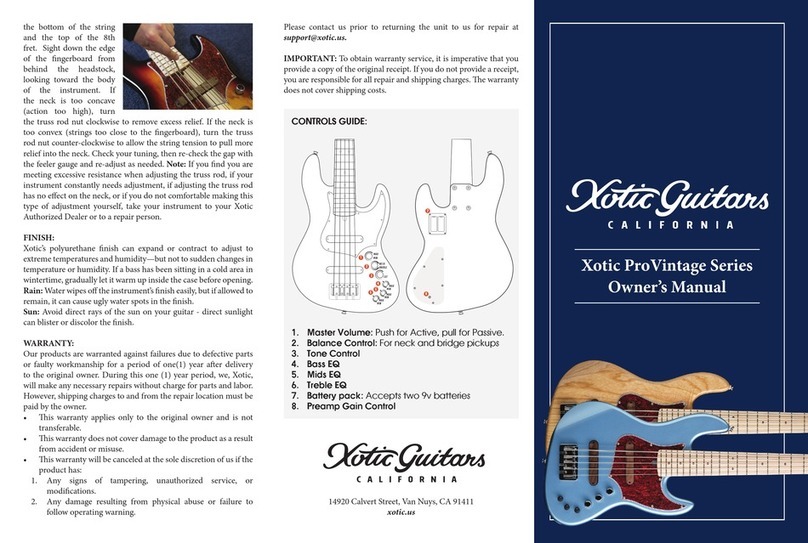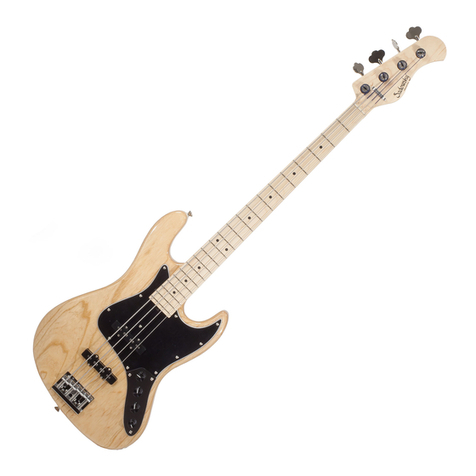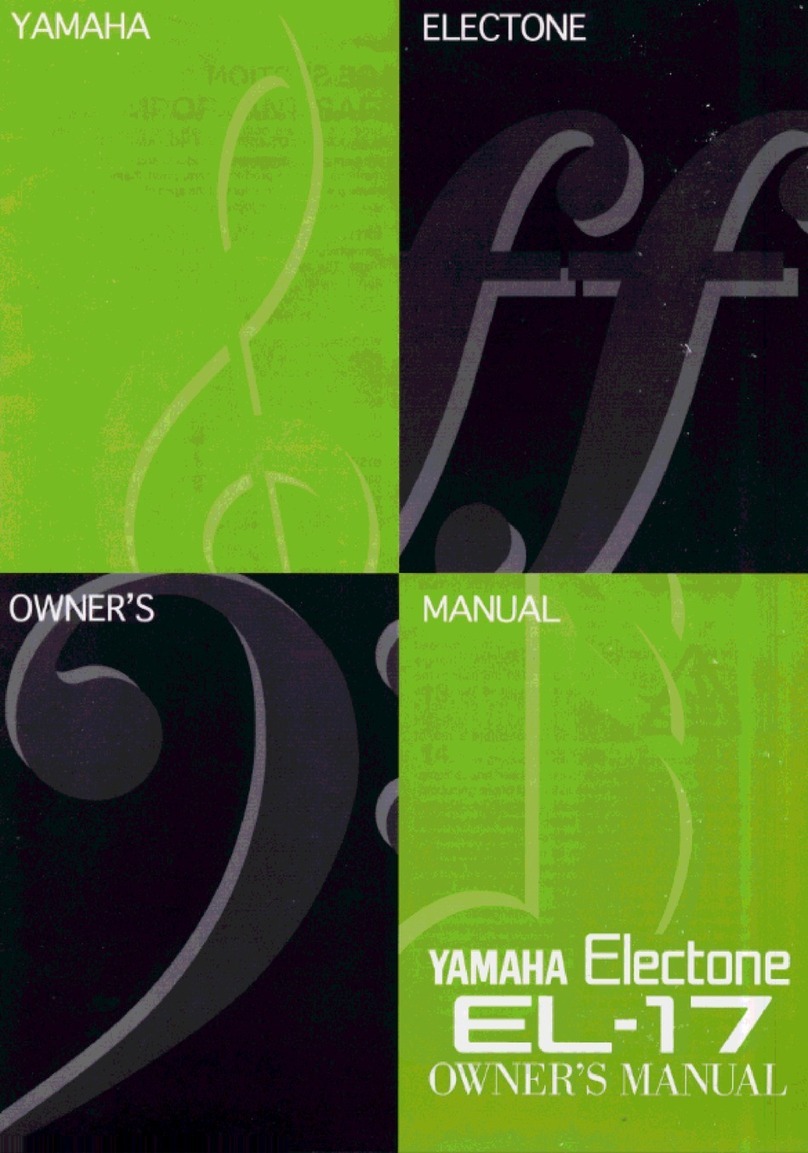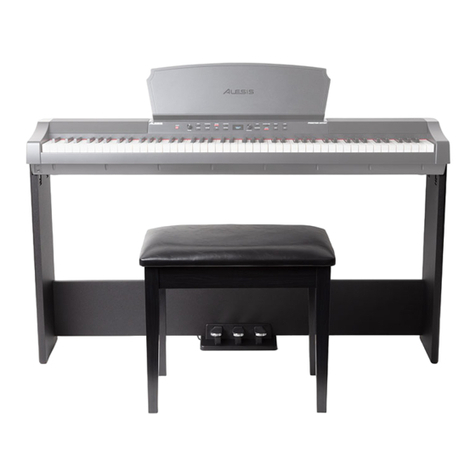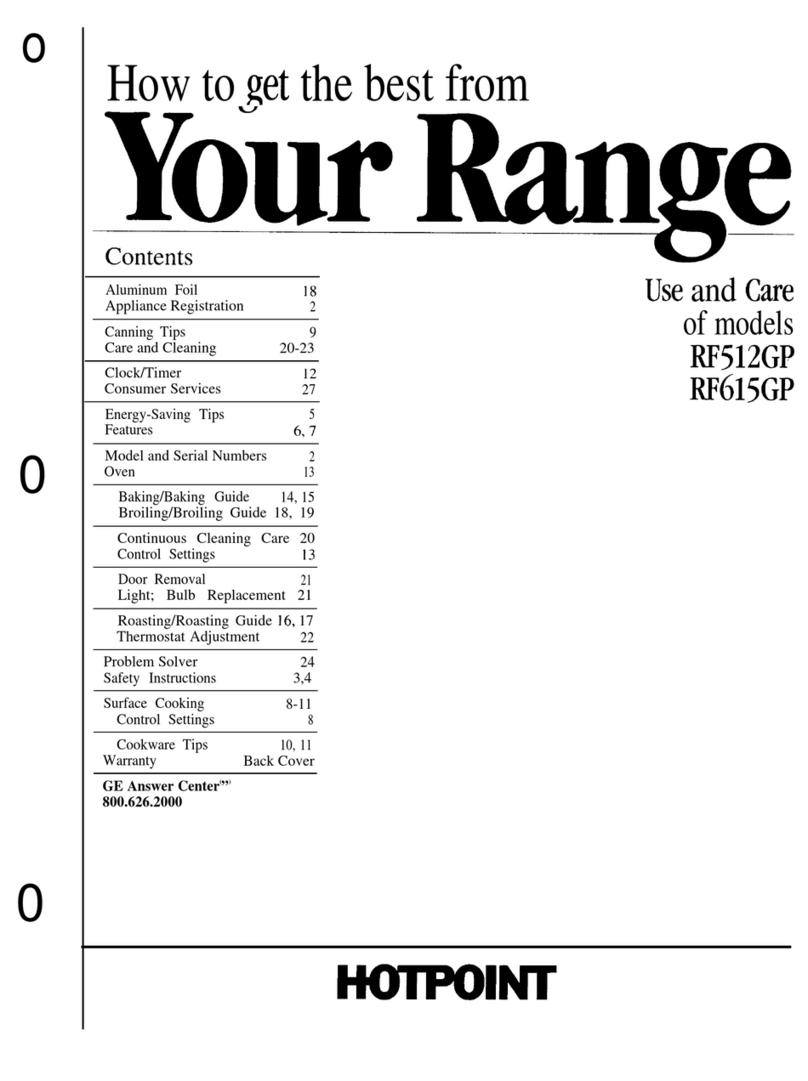SECTION II.
DISASSEMBLY 1M>
2-1 GENERAL
This section contains instructions for removal of
specific assemblies of the organ. Step 2-2 thru
2-13 provide disassembly procedures for the
Upper Section (Manual Keyboard) of the organ.
Steps 2-14 thru 2-17 provide disassembly
procedures for the Lower Section of the organ.
The removal of some sub-assemblies and un-
plugging connectors or unsoldering is obvious.
These will not be discussed.
For reassembly, use reverse procedures.
UPPER SECTION
2-2 TOP PANEL
a) Two (2) bronze screws (614" long) located
under Upper Section must be removed FIRST.
(Note —See Figure 2-1 for location).
b) Near top and center of each side of Upper
Section remove bronze screw.
c) From front of top panel, lifting evenly, raise
top to swing up position.
2-3 UPPER MANUAL ASSEMBLY
a) See figure 2-1 for location -Remove six (6)
1" long bronze screws from under side of
Upper Section.
b) Raise manual to swing up position. {Do not
lift by keys).
2-4 END BLOCKS -LOWER MANUAL
a) Remove two (2) phillips screws from rear of
each End Block Assembly.
b) Carefully lift up and avoid marring or scratch-
ing.
2-5 LOWER MANUAL ASSEMBLY
a) Lower Manual End Blocks should be removed
first to avoid damage to case or other assemblies.
b) See Figure 2-1 for location. Remove four (4)
1" long bronze screws from under side and
toward front of Upper Section.
c) Carefully, Manuai can be placed in up right
position. (Do not lift by keys!.
2-6 TONE BAR ASSEMBLY
a) Unplug Upper and Lower tone bar connectors
for T.G-15 (B) PWB assembly located under
Upper Manual Assembly.
b) Remove self tapping screws mounting Tone
Bars to Upper Manual Assembly.
2-7 POWER SWITCH AND UPPER MANUAL
RIGHT HAND END BLOCK.
a) Follow steps 2-2 thru 2-3.
b) Remove End Block, by removing one (1)
screw at rear, top of End Block. Screw located
under felt.
c) Raise manual and from under End Block
remove screw.
d) Between Front Strip, remove small screw
fastening strip to End Block. Lift up End Block.
e) From under side of End Block, remove two (s)
screws fastening cover to switch. Remove cover.
f) To remove power switch -after End Block is
loose from Manuai, remove two (2) black screws
from top of End Block. Switch now can be
removed from under side of End Block.
Reassemble in reverse procedure.
2-8 TO REMOVE END BLOCK POTENTIOMETERS
a) Follow step 2-2 thru 2-5.
b) Remove knob of potentiometer. (Volume,
Brilliance, or Repeat), by loosening small set
screw in knob.
c) Remove End Block by removing two (2}
screws top rear of End Block. Lift Block.
d) Remove hex nut securing potentiometer to
End Block, Potentiometer can be removed from
bottom side of Assembly.
2-9 ROCKER TABS (REMOVAL)
a! Proceed as stated in Stepes 2-2 thru 2-4.
b) From under side of End Block, remove top
and bottom screw of associated Rocker Tab
Assembly. Rocker Tab will lift out.
2-
1
